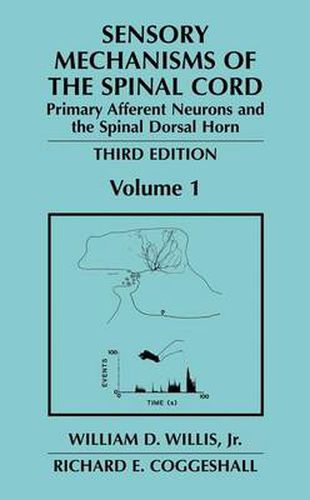Readings Newsletter
Become a Readings Member to make your shopping experience even easier.
Sign in or sign up for free!
You’re not far away from qualifying for FREE standard shipping within Australia
You’ve qualified for FREE standard shipping within Australia
The cart is loading…






This title is printed to order. This book may have been self-published. If so, we cannot guarantee the quality of the content. In the main most books will have gone through the editing process however some may not. We therefore suggest that you be aware of this before ordering this book. If in doubt check either the author or publisher’s details as we are unable to accept any returns unless they are faulty. Please contact us if you have any questions.
The third edition of this monograph continues to have the goal of providing an overview of current thought about the spinal cord mechanisms that are responsible for sensory processing. We hope that the book is of value to both basic and clinical neuroscientists. Several changes have been made in the presentation, as well as additions because of the research advances that have been made during the past decade. Chapters 3 and 4 in the previous edition have been subdivided, and now the morphology of primary afferent neu rons of the dorsal root ganglia is described in Chapter 3 and the chemical neuroanatomy 4. The description of the dorsal hom in the previous Chapter 4 of these neurons in Chapter is now included in Chapter 5, and the chemical neuroanatomy of the dorsal hom in Chapter 6. Furthermore, discussions of the descending control systems have now been of Chapter 12. consolidated at the end The authors would like to express their appreciation for the help provided by several individuals. R.E.C. wishes to acknowledge the many things he learned about primary afferent neurons from conversations with Dr S. N. Lawson. He also thanks Lyn Shilling for her assistance with the typing. WDW thanks Dr Nada Lawand for her critical reading of parts of the manuscript, Rosaline Leigh for help with the manuscript, and Griselda Gonzales for preparing the illustrations.
$9.00 standard shipping within Australia
FREE standard shipping within Australia for orders over $100.00
Express & International shipping calculated at checkout
This title is printed to order. This book may have been self-published. If so, we cannot guarantee the quality of the content. In the main most books will have gone through the editing process however some may not. We therefore suggest that you be aware of this before ordering this book. If in doubt check either the author or publisher’s details as we are unable to accept any returns unless they are faulty. Please contact us if you have any questions.
The third edition of this monograph continues to have the goal of providing an overview of current thought about the spinal cord mechanisms that are responsible for sensory processing. We hope that the book is of value to both basic and clinical neuroscientists. Several changes have been made in the presentation, as well as additions because of the research advances that have been made during the past decade. Chapters 3 and 4 in the previous edition have been subdivided, and now the morphology of primary afferent neu rons of the dorsal root ganglia is described in Chapter 3 and the chemical neuroanatomy 4. The description of the dorsal hom in the previous Chapter 4 of these neurons in Chapter is now included in Chapter 5, and the chemical neuroanatomy of the dorsal hom in Chapter 6. Furthermore, discussions of the descending control systems have now been of Chapter 12. consolidated at the end The authors would like to express their appreciation for the help provided by several individuals. R.E.C. wishes to acknowledge the many things he learned about primary afferent neurons from conversations with Dr S. N. Lawson. He also thanks Lyn Shilling for her assistance with the typing. WDW thanks Dr Nada Lawand for her critical reading of parts of the manuscript, Rosaline Leigh for help with the manuscript, and Griselda Gonzales for preparing the illustrations.